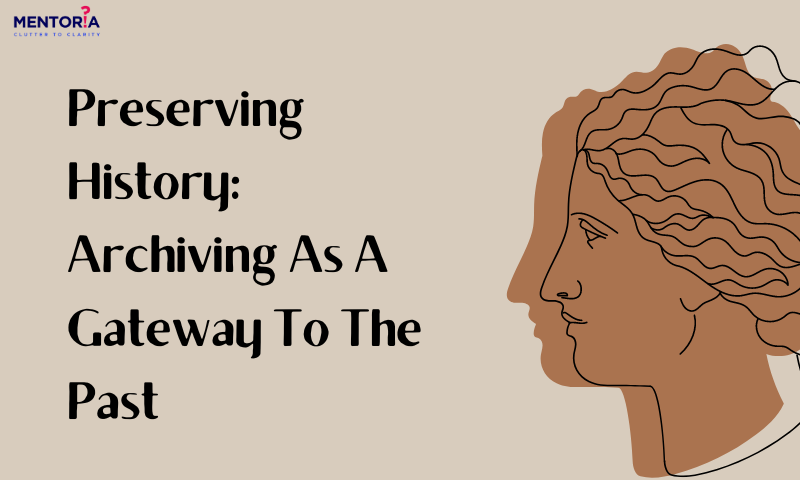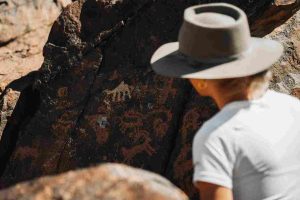Preserving History: Archiving As A Gateway To The Past

Jump to Section
Imagine stumbling upon a hidden treasure chest filled with artefacts from a bygone era – letters, photographs, and documents that transport you to a different time. Archiving is the modern-day equivalent of that time capsule, preserving history for future generations to discover and learn from. In a world where information moves at lightning speed and trends come and go, it’s crucial to recognize the significance of archiving in safeguarding our heritage.
In the vast sea of information and digital content that surrounds us today, it is easy to overlook the significance of archiving. Yet, nestled within the forgotten books of dusty attics and meticulously catalogued archives lie the keys to our past—the essence of our collective human experience. Archiving is not merely a mundane task; it is a vital duty we owe to future generations, a priceless gift that ensures the preservation of history’s rich tapestry, enabling us to learn, grow, and appreciate the path that has led us to where we stand today. This blog explores the profound importance of archiving and its role in safeguarding our heritage for the generations yet to come.
Unveiling The Forgotten Tales: The Significance Of Archiving
Archiving is the process of collecting, preserving, and organising historical documents, photographs, and other materials. It is a vital activity that helps us to understand our past and to learn from the experiences of previous generations. Archiving is like a guardian of history, ensuring that the stories, experiences, and knowledge of past generations are not lost in the sands of time. It serves as a time machine, allowing us to learn from our predecessors and gain insights into their lives, cultures, and achievements. Without archiving, we would be left with fragmented narratives and incomplete understanding of our collective history.
Preserving Historical Documents: Dusting Off The Chronicles
Historical documents are the backbone of any archive. They provide firsthand accounts of significant events, personal narratives, and insights into the social, political, and cultural contexts of the past. These documents can include letters, diaries, official records, manuscripts, and more. For example, the Magna Carta is a historical document that is still relevant today. It was signed in 1215 by King John of England, and it established the principle that the king is not above the law. The Magna Carta is an example of how archiving can help us to understand our past and to learn from the experiences of previous generations. Archiving these materials ensures their long-term preservation and accessibility for future generations. It allows us to connect with the voices of our ancestors and gain a deeper understanding of their triumphs, struggles, and contributions.
Photographs: Capturing Moments Frozen In Time
Photographs are powerful tools that freeze moments and emotions for eternity. They provide visual evidence of our history, allowing us to witness the faces, places, and events that shaped our world. Archiving photographs preserves these visual records, ensuring that future generations can experience the essence of the past. From black-and-white snapshots to colourful memories, photographs enable us to bridge the gap between generations and cherish the legacies of our predecessors. For example, the photograph of the raising of the American flag at Iwo Jima is a powerful image that captures the heroism and sacrifice of the American soldiers who fought in World War II. This photograph is an example of how archiving can help us to connect with the past and to appreciate the sacrifices that have been made for our freedom.
Digital Archiving: Embracing The Future Of Preservation
As technology advances, archiving has expanded into the digital realm. Digital archiving offers numerous advantages, such as easy accessibility, enhanced search capabilities, and the ability to preserve fragile materials without physical degradation. It encompasses digitising historical documents, photographs, audio recordings, and more. By embracing digital archiving, we can safeguard our heritage in a format that is both secure and adaptable to future technologies. It ensures that our history remains alive in a world driven by digital innovation. For example, the Library of Congress has digitized millions of historical documents, photographs, and other materials. This allows anyone to access these materials from anywhere in the world. Digital archiving is an important tool for preserving our heritage and making it accessible to future generations.
Archiving And Cultural Heritage: Connecting The Dots
Cultural heritage encompasses the traditions, practices, and artefacts that define a society. Archiving plays a vital role in preserving cultural heritage, safeguarding the intangible treasures that shape our identities. It enables us to pass down cultural knowledge, traditions, and stories from one generation to the next. Archiving helps us connect the dots between past and present, fostering a sense of belonging and appreciation for our roots. It celebrates diversity and ensures that cultural heritage remains vibrant and relevant. For example, the National Archives of Australia preserves the records of the Australian government and its agencies. These records document the history of Australia and its people, and they are an important part of the country’s cultural heritage.
Archives As Learning Resources: Inspiring Future Generations
Archives are not mere storehouses of information; they are educational goldmines. They serve as valuable resources for researchers, scholars, students, and curious minds alike. By making historical materials accessible, archives inspire new discoveries, research, and insights. They encourage critical thinking, promote historical literacy, and instil a sense of curiosity about the world around us. Archiving empowers future generations to learn from the past and shape a better future.
Preserving Our Footprints: Leaving A Legacy
Archiving is not just about preserving history; it’s about leaving a legacy for future generations. By archiving our own experiences and stories, we contribute to the collective tapestry of human history. From personal diaries and family photographs to digital records of our lives, every contribution matters. Archiving allows us to be a part of a larger narrative, leaving footprints that will guide and inspire those who come after us. For example, the Shoah Foundation has collected over 50,000 oral histories of Holocaust survivors. These oral histories are an important part of the world’s cultural heritage, and they help us to remember the atrocities of the Holocaust and to learn from the experiences of those who survived.
Exploring The Past With Mentoria By Your Side
Archiving is the art of preserving the essence of humanity, capturing our triumphs, struggles, and everyday moments for future generations. It ensures that our history remains alive, vibrant, and accessible. By preserving documents, photographs, and artefacts, we safeguard the stories and experiences of those who came before us, ensuring that their legacies endure. Whether you’re a history enthusiast, a researcher, or simply curious about the past, exploring the world of archiving can be a fascinating and rewarding journey. And if you’re looking to deepen your knowledge and skills in this field, Mentoria is here to support you. Through archiving, we can connect with our roots, learn from the past, and shape a brighter future. So, let’s embrace the significance of archiving and become custodians of history. Together, let’s unlock the time capsule and preserve our legacy for generations yet to come.









